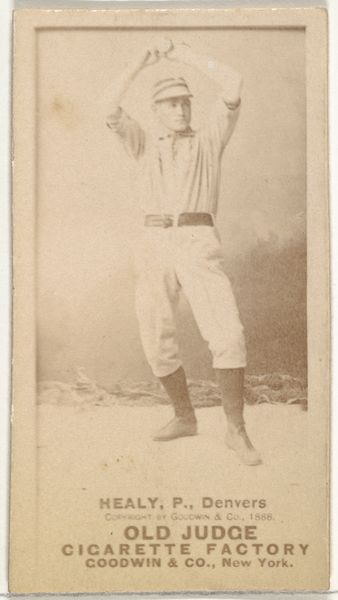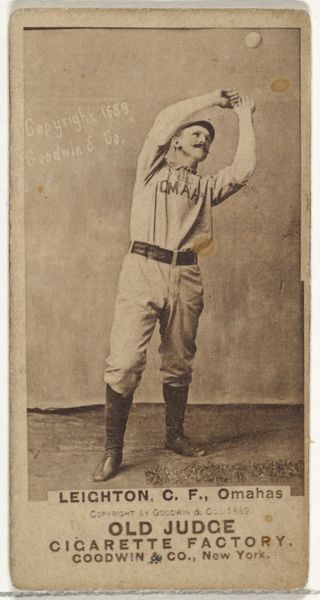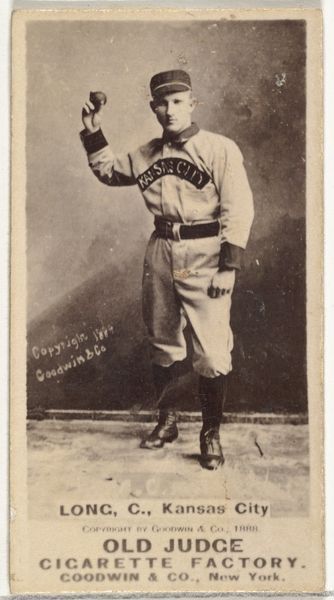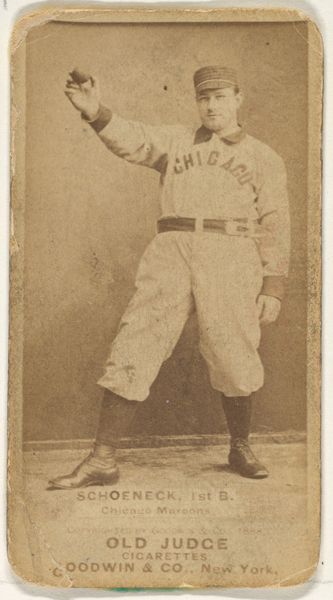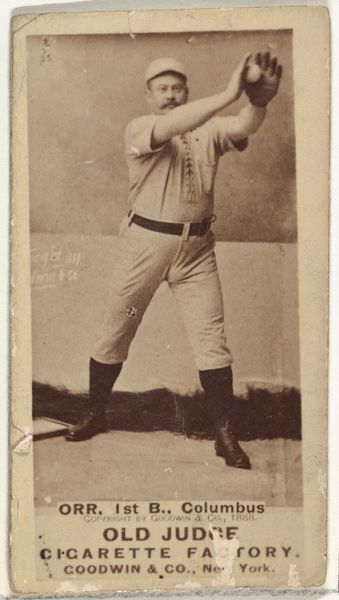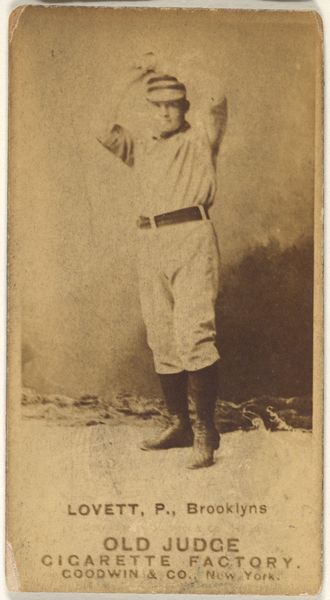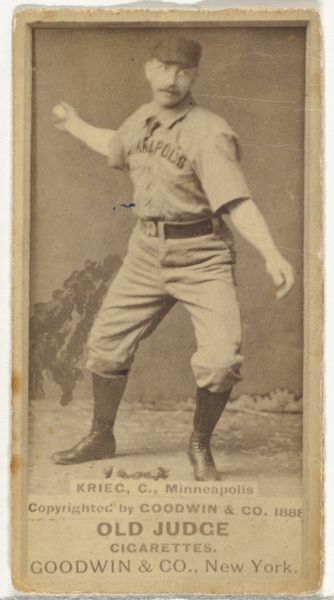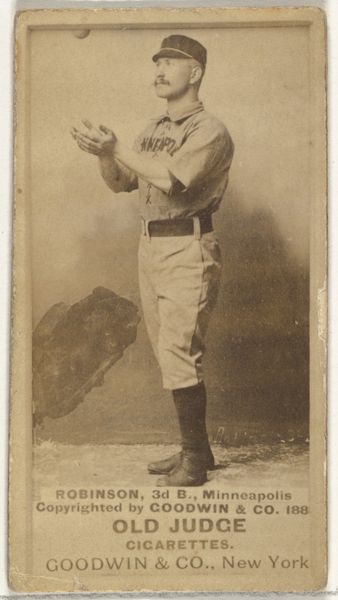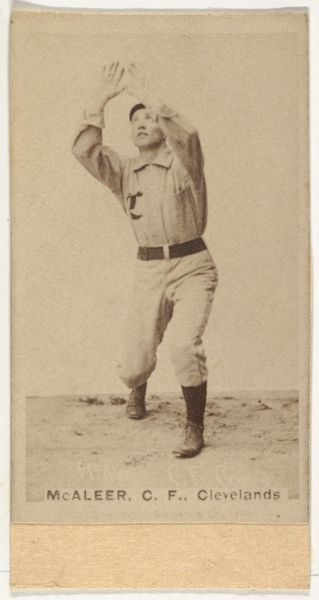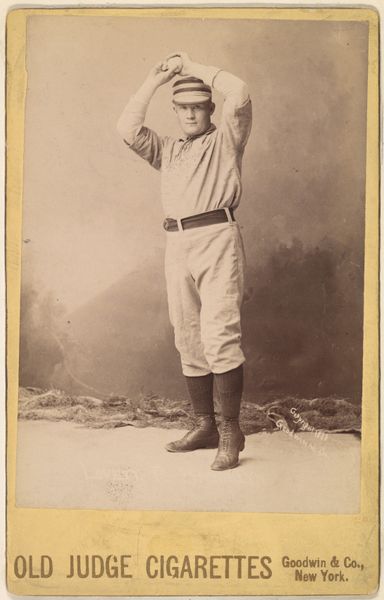
Amos Rusie, Pitcher, Indianapolis, from the Old Judge series (N172) for Old Judge Cigarettes 1889
0:00
0:00
drawing, print
#
portrait
#
print photography
#
photo of handprinted image
#
drawing
#
aged paper
#
yellowing background
#
photo restoration
# print
#
colourisation
#
old engraving style
#
baseball
#
19th century
#
men
#
watercolour illustration
#
athlete
#
watercolor
Dimensions: sheet: 2 11/16 x 1 3/8 in. (6.9 x 3.5 cm)
Copyright: Public Domain
Editor: So, this is an 1889 print of Amos Rusie, a baseball pitcher for Indianapolis, produced by Goodwin & Company for Old Judge Cigarettes. It's striking how this seemingly simple image was used for advertising. What do you make of its historical and cultural significance? Curator: Well, it's more than just a baseball card; it's a window into late 19th-century popular culture. Consider the burgeoning baseball industry, the rise of mass media through print, and, of course, the ubiquitous presence of tobacco. These cards weren't just collectibles; they were actively shaping the image of baseball heroes and subtly promoting cigarette consumption. Think about how these images might have contributed to a particular idea of masculinity or American identity at the time. Does this suggest how imagery intersects with larger societal trends? Editor: That's fascinating. It highlights the power of commercial images to shape perceptions. The connection between sports, advertising, and identity is definitely something to consider. Did the accessibility and distribution of these cards affect who had access to art? Curator: Precisely. It democratized imagery in a way, making representations of athletes readily available, but within the constraints of a commercial enterprise. How does the act of mass producing the prints change how we think about the artwork itself? It certainly removes the uniqueness we normally associate with art. Editor: It reframes art as something much more accessible, yet also driven by market forces, making it almost propaganda. Curator: Exactly. And recognizing that changes the way we evaluate what it means and why it was made. This wasn't art for art's sake. Editor: Right, looking at art as part of broader societal trends is super useful. It contextualizes pieces in ways I hadn't considered. Thanks. Curator: My pleasure. Understanding those relationships gives us much more power in determining how an image functioned, and who it functioned for, rather than simply looking at its aesthetics.
Comments
No comments
Be the first to comment and join the conversation on the ultimate creative platform.
